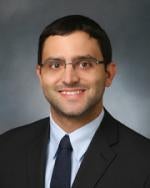Addressing the question of precisely when a continuation application must be filed in order to be entitled to its parent application’s filing date, the US Court of Appeals for the Federal Circuit held that the statutory requirement to file “before” patenting of the parent is met when the continuation is filed on the day the parent patent issues. Immersion Corp. v. HTC Corp., Case No. 15-1574 (Fed. Cir., June 21, 2016) (Taranto, J).
Immersion sued HTC for infringement of three haptic feedback patents. The three patents were serial continuations in a patent family where the first continuation application in their chain of priority was filed on the same day that its parent patent issued. HTC argued that the continuations were not entitled to the original filing date, because the first continuation did not satisfy the 35 USC § 120 requirement to be filed “before the patenting” of its parent. The district court agreed and effectively upended 50 years of patent practice by holding that a continuation application must be filed before the day that its parent issues. Immersion appealed.
In reversing, the Federal Circuit explained that HTC’s position interpreted the statutory word “before” to mean “the day before,” even though the statute is ambiguous as to the relevant unit of time. The Court thus embarked on a historical analysis, which it found determinative. The analysis began with an 1864 Supreme Court of the United States opinion that originally allowed same-day continuation applications. The Federal Circuit then reviewed the 1952 Patent Act, which set forth § 120 and its “before” language, noting that the legislative history and contemporaneous commentary regarding the Act lacked evidence of any intent to eliminate same-day continuations. The Court also pointed to a US Patent and Trademark Office (PTO) regulation that interpreted § 120 to require that the continuation be filed while the parent is “copending,” and to a Manual of Patent Examining Procedure section that expressly allowed a continuation application to be filed on the day its parent issued.
The Court treated the historical analysis as a longstanding administrative construction entitled to heavy weight, particularly given the reliance by the public and the PTO. It noted that more than 10,000 active patents could be affected by the change and refused to cause such a large disruption. Finally, the Court discounted HTC’s attack as simply procedural and noted that determining how and when legally defined events such as filing or patenting take place has long been treated as a non-substantive matter well within the PTO’s authority.




 />i
/>i
